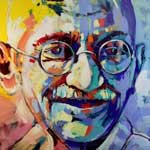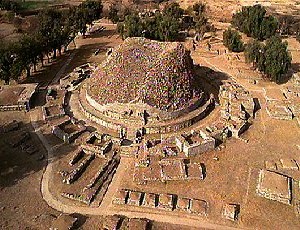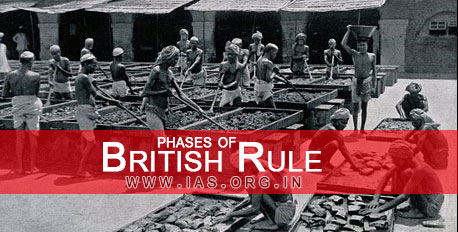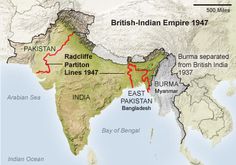Vikramasila University was one of the two most important centres of Buddhist learning in India during the Pala dynasty, along with Nālandā University.Vikramasila was established by King Dharmapala (783 to 820) in response to a supposed decline in the quality of scholarship at Nalanda.
Vikramasila (village Antichak, district Bhagalpur, Bihar) is located at about 50 km east of Bhagalpur and about 13 km north-east of Kahalgaon, a railway station on Bhagalpur-Sahebganj section of Eastern Railway.
Vikramaśila was founded by Pala king Dharmapala in the late 8th or early 9th century. It prospered for about four centuries before it was destroyed by Bakhtiyar Khilji during fighting with the Sena dynasty along with the other major centers of Buddhism in India around 1200.
Must Read: The Chinese Revolution
Vikramasila is known to us mainly through Tibetan sources, especially the writings of Taranatha, the Tibetan monk-historian of the 16th-17th centuries.
Vikramasila was one of the largest Buddhist universities, with more than one hundred teachers and about one thousand students. It produced eminent scholars who were often invited by foreign countries to spread Buddhist learning, culture, and religion.
The most distinguished and eminent among all was Atisa Dipankara, a founder of the Sarma traditions of Tibetan Buddhism. Subjects like philosophy, grammar, metaphysics, Indian logic etc. were taught here, but the most important branch of learning was tantrism.
A fortified Vikramaśīla was destroyed by Muslim invaders fighting the Sena dynasty along with the other major centers of Buddhism in India around 1200. The remains of the ancient university have been partially excavated at village Antichak in the Bhagalpur district, Bihar state, India, and the process is still underway.
The university lies on top of the hill on the banks of the River Ganga. There was a temple at the center of university enshrining the life-size copy of the Mahabodhi tree. 53 small temples were in the vicinity for the study of the Guhyasamaja Tantra. Another 54 ordinary temples were also there. The main temples had statues of Nagarjuna and Atisa at the entrance. Santipa, Jetari, Ratnavajra, Jnanasrimitra, Naropa and Atisa were great scholars at Vikramshila University at that period of time.
Must Read: Takshila University
Vikramasila was one of the largest Buddhist universities, with more than one hundred teachers and about one thousand students. It produced eminent scholars who were often invited by foreign countries to spread Buddhist learning, culture, and religion. The most distinguished and eminent among all was Atiśa Dipankara, a founder of the Sarma traditions of Tibetan Buddhism. Subjects like philosophy, grammar, metaphysics, Indian logic etc. were taught here, but the most important branch of learning was tantrism.
Vikramasila was a centre for Vajrayana and employed Tantric preceptors. The first was Buddhajnanapada, followed by Dipaṁkarabhadra and Jayabadhra. The first two were active during Dharmapāla’s reign, the third in the early to mid portion of the 9th century. Jayabadhra was the first prominent commentator on the Cakrasamvara tantra. Sridhara was the next preceptor, followed by Bhavabhaṭṭa. The latter, also a prominent commentator on Cakrasamvara, may have been the maha Siddha Bhadrapada. He, in turn, was succeeding by three more prominent Cakrasamvara commentators, Bhavyakirti, Durjayacandra, and Tathagatarakṣita.
The Vikramshila site is the place for Vikramshila Mahotsav, which is held annually during the month of February.
Vikramasila was neglected for years which contributed to extensive damages to the monument A.S.I. is now planning to develop the excavated site of Vikramshila University.
Also, Read:







